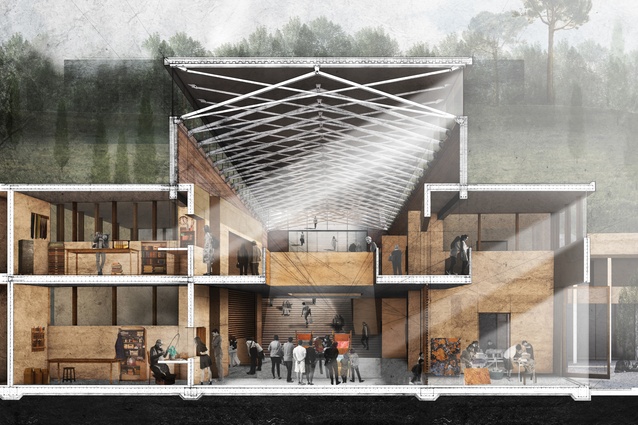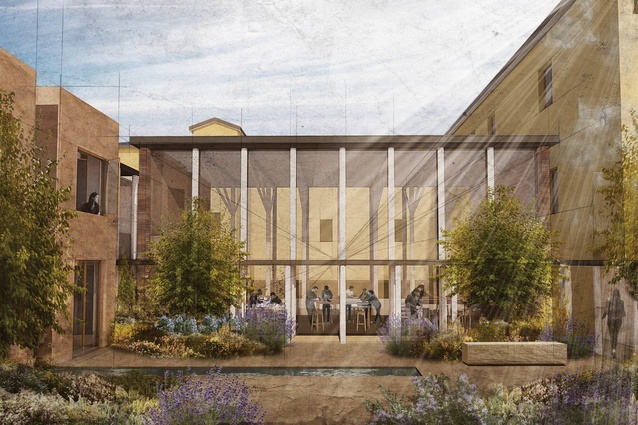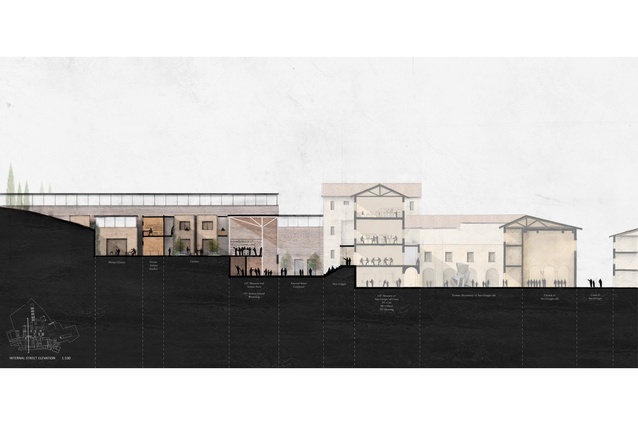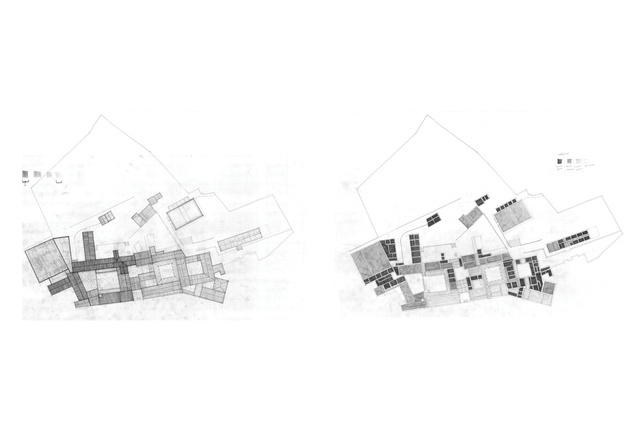Crit: Artisan revival
In her project Not a Monastery: Transposing and interpreting the ancient typology, Unitec School of Architecture student Emily Pearce, a finalist in the 2018 NZIA Resene Student Design Awards, weaves together old and new to create an artisan school.
In the ancient Tuscan city of Firenze (Florence), the monastery and the artisan share a closely intertwined history. Urban medieval monasteries would go on to shape the development of the arts through their patronage, as innovations in art and craftmanship founded in the monastery would disperse into practice among the wider community.
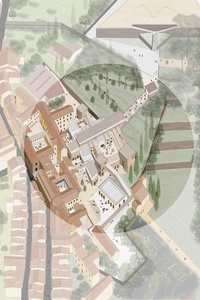
When you watch an artisan working, it feels as though time stops. Your eyes and ears are simultaneously transfixed by the movements of the artisan’s hands, manoeuvring materials and tools in repeated, deceptively simple motions that take lifetimes to master. Yet, in Florence, these practices that define the historic city today are threatened by the intensifying presence of commercialisation and tourism.
Many former monasteries are scattered throughout Florence’s historic centre. There is great joy in discovering these private sanctuaries, tucked away from the busy streets. Inside, things seem to happen at their own pace. Fortunately, many have been repurposed into thriving social spaces but many still remain untouched or have been left to ruin.
So, I asked, could the monastery once again support the artisan? How could this inherent relationship be re-imagined? The architectural typology of the monastery became an analogical lens through which to design an artisan school in Florence that would help re-assimilate the practice, preservation and appreciation of authentic Florentine artisan crafts. I chose to represent four quintessential Florentine crafts: carta marmorizzata (marbled paper), mosaico Fiorentino (marble mosaics), legatura (bookbinding) and scagliola (imitation marble).
I selected a site in the Oltrarno, the historically renowned artisan district. Three former derelict monasteries sit on a steep, winding road leading up to Forte di Belvedere. Behind them hides an overgrown site, scattered with early-20th-century barrack buildings and bound on one side by the Boboli Gardens. The site’s complex history and physical character yearned for overdue attention and signalled an opportunity to create a prominent pedestrian thoroughfare that could tie it back into the cityscape.
In partnership with the new school, the site and its buildings were reintegrated into the cityscape by bricolage – a process of taking existing means and working with them through deconstruction, modification and adaption while preserving remnants of their sources. The historic monastery was one of these means – characterised by an articulation of interconnected forms and spaces arranged to mediate unique social activities and daily routines. The slowness of drawing by hand in plan and section gave me time to explore and question the ways in which physical and social realms could meet and establish new relationships with one another.
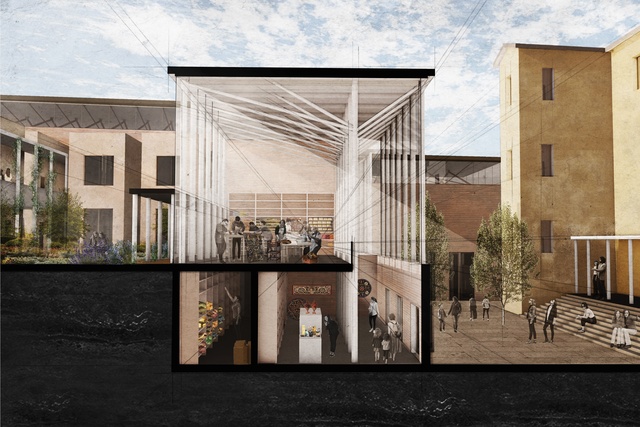
The most important spatial element of the artisan school is ‘the spine’. It is analogical to the church as it establishes the closest connection between the artisan and the visitor. The pathway through the spine is linear but fragmented and spatially varied. It punches through the centre of the school, creating many possibilities to engage the artisan and visitor at a more intimate scale. Artisan workshops, public workshops and private studios are bound into this central space through level division, spatial overlaps, screens and voids. This creates opportunities for observation, participation and awareness of the artisan practice, while also balancing the autonomy and connection between artisan and visitor.
The new complex shares and contrasts materials, spaces and formal language with the old. The shedding yellow stucco façades reveal patches of local pietra forte brickwork that then inspires the façades of the new buildings. The Florentine basilica truss is celebrated in its contemporary interpretation, lifting off the heavy masonry to flood the interior with light.
My project attempts to show the ways in which historic architectural typologies can play a catalytic role in the transformation of the contemporary urban realm. A place is imagined where Florentine artisans can practise, teach, develop and share their own disciplines.
Artisan craft is a delicate but indispensable asset within every culture today. But, I believe that it takes conscious effort from the entire community to support the artisans and ensure the secrets of their crafts stay alive. Only then will time continue to allow us the privilege of watching the master artisan at work.
Judges’ citation:
“The resilient and adaptive qualities of a Florentine monastery are starting points for a project of finesse and organisational clarity. This once-lost part of the city has been rediscovered and, through a process of bricolage, has been carefully inserted into the ancient fabric of the city, and beautifully drawn in a series of sectional drawings that capture something of the light of Firenze. A new school, a place for traditional skills to find contemporary expression, has been carefully crafted around a spine that weaves old and new together with the landscape.”
This article first appeared in Architecture New Zealand magazine.


